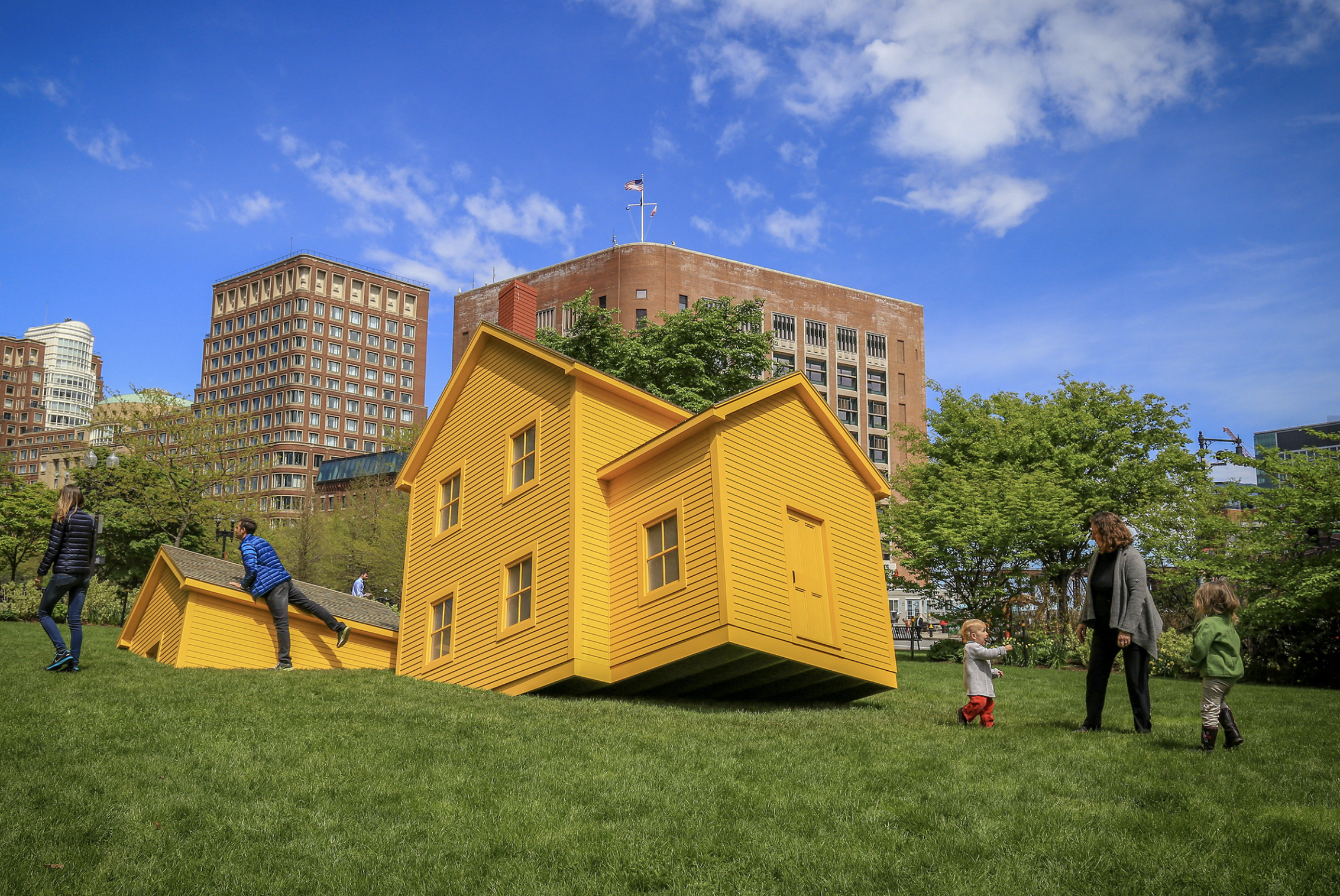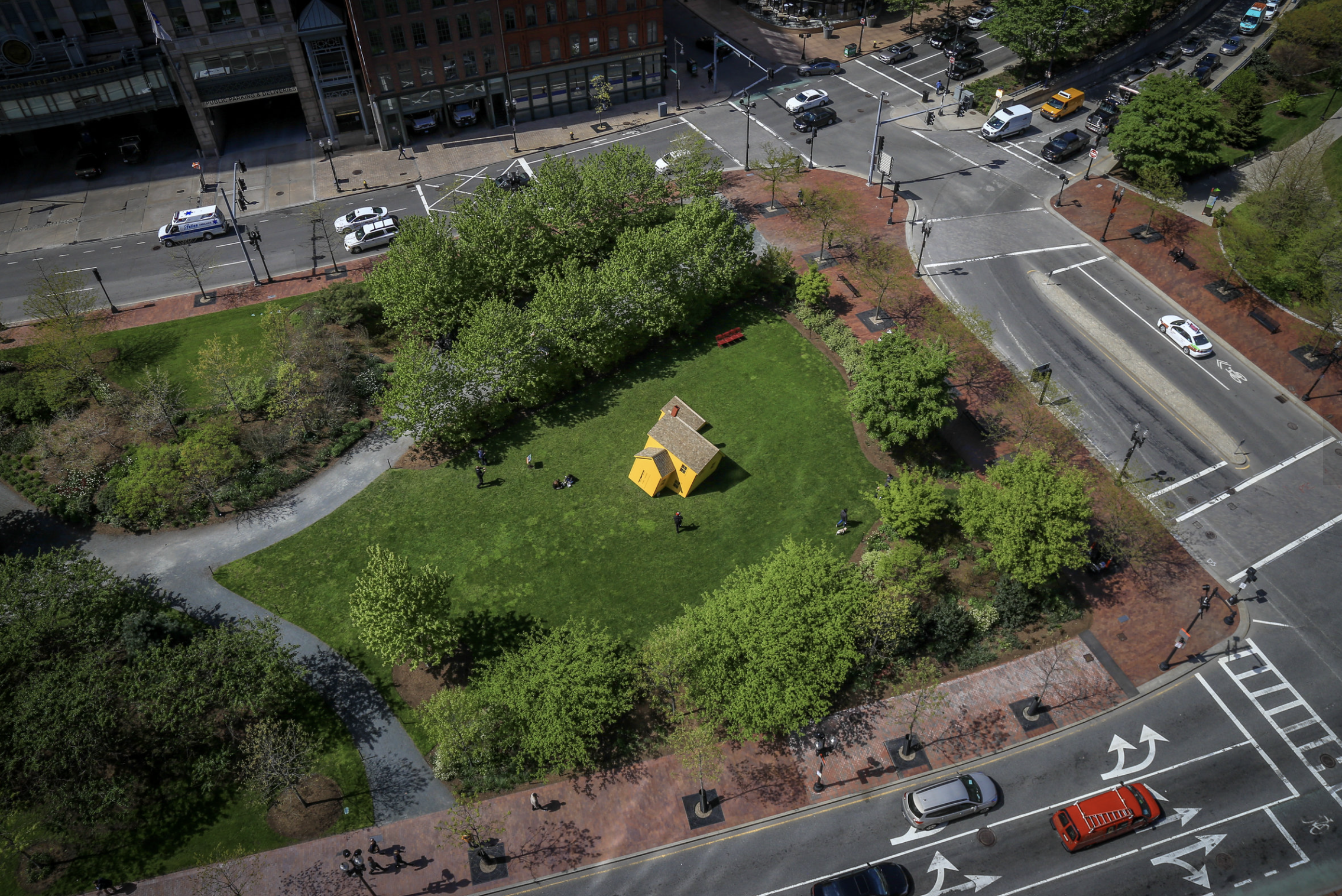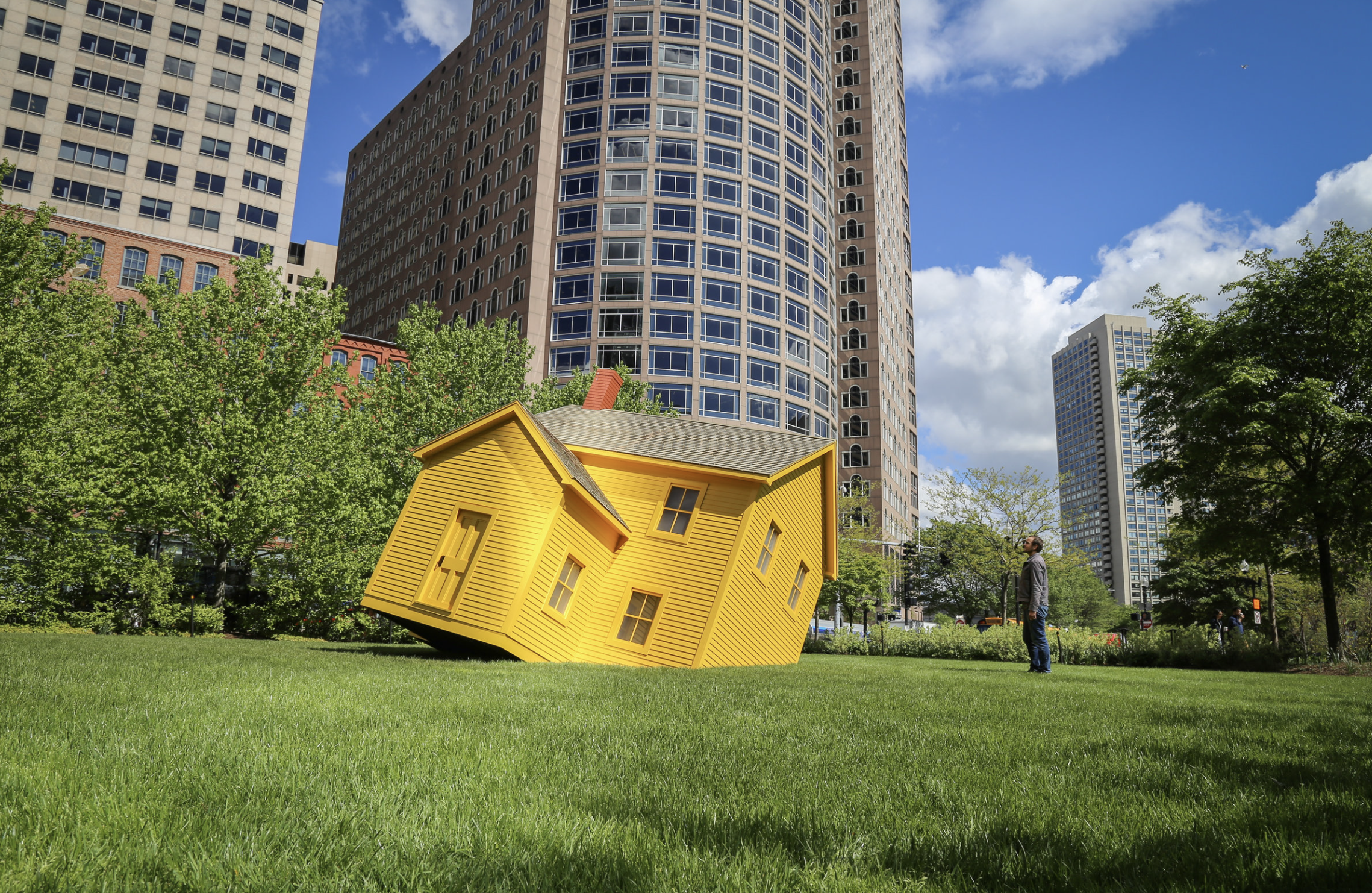Playful Perspectives - Meredith James, Aakash Nihalani & Mark Reigelman
Meredith James, Far from this setting in which I now find myself (Ames Room)
Playful Perspectives was an exhibition of large-scale, site-specific commissioned works by artists with rising careers whose works playfully and delightfully expose the vulnerability of one’s sense of perspective. These works manipulated visual perception through the use of scaled objects and optical illusions, blurring the boundaries between art and everyday life, and between expectation and reality. In addition to the artworks, Playful Perspectives juxtaposed play structures such as tetherball with the landscape of downtown Boston and invite people of all ages to play. By inserting these works in spaces that thousands of people pass through in the course of their daily routine, the exhibition sought to reimagine the mundane.
Far from this setting in which I now find myself, Meredith James
Meredith James’ sculpture is an optical illusion called an Ames room – a three-walled trapezoidal room built with a false perspective. What seems a believable space becomes implausible when a person walking from one side of the room to the other appears to grow or shrink. The logic of James’ sculptures and installations depend on the viewer’s interaction; it is only through an active process of looking – through peephole, camera, or door – that a piece becomes complete. In this artwork, both viewer and participant become part of the larger installation and the sculpture itself becomes a kind of stage for their actions.
To the naked eye, the sculpture looks like an off-kilter garden but when viewed from the viewfinder a few feet in front of the piece, the perfectly symmetrical garden frames the radically disproportional people within. Between walking around in the room and taking photographs through the peephole, visitors can experience a gap between what they perceive and what another sees. James has created a park within a park, placing her sculpture so that the Boston sky completes the illusion, merging sculpture with reality.
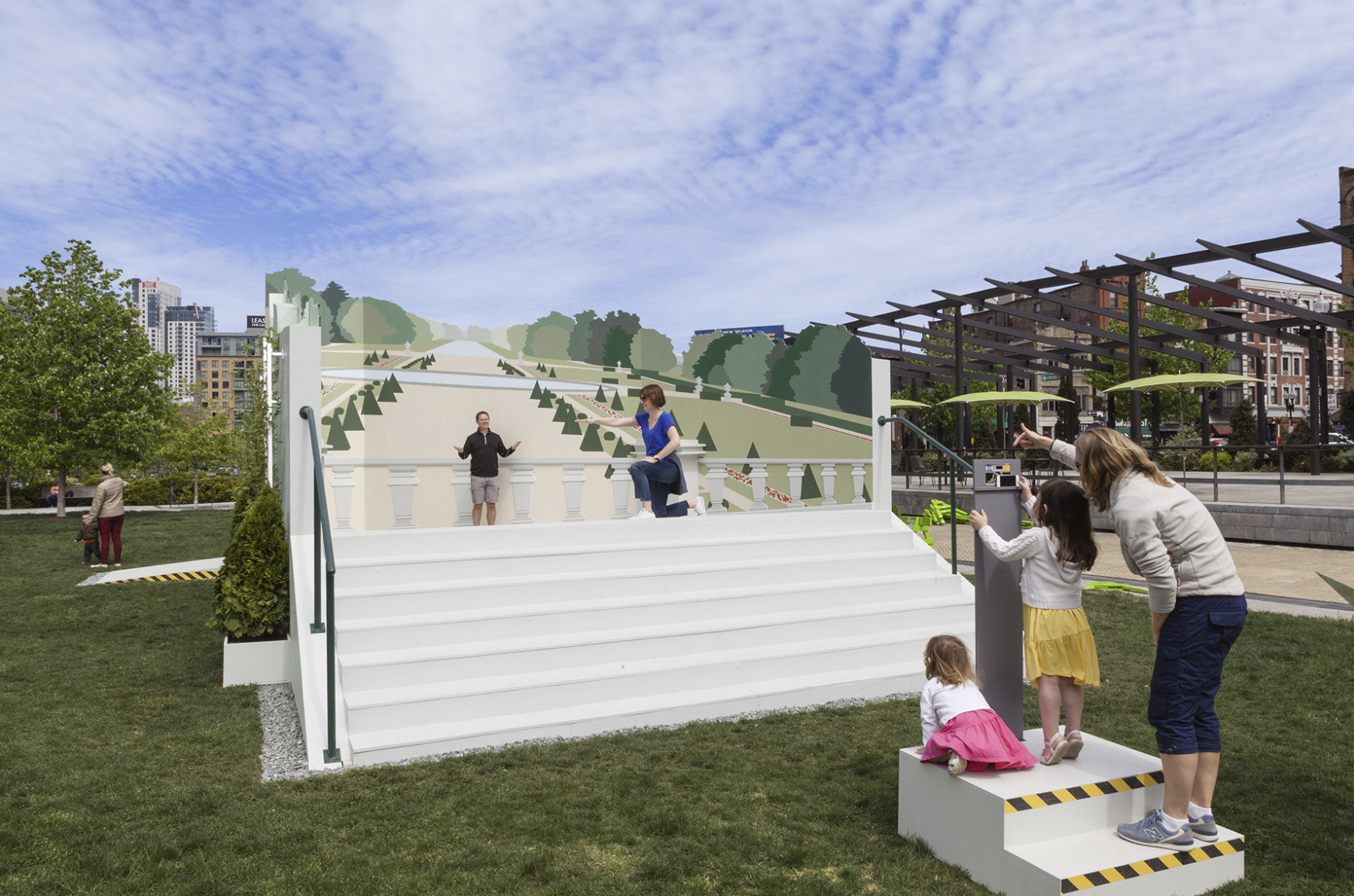
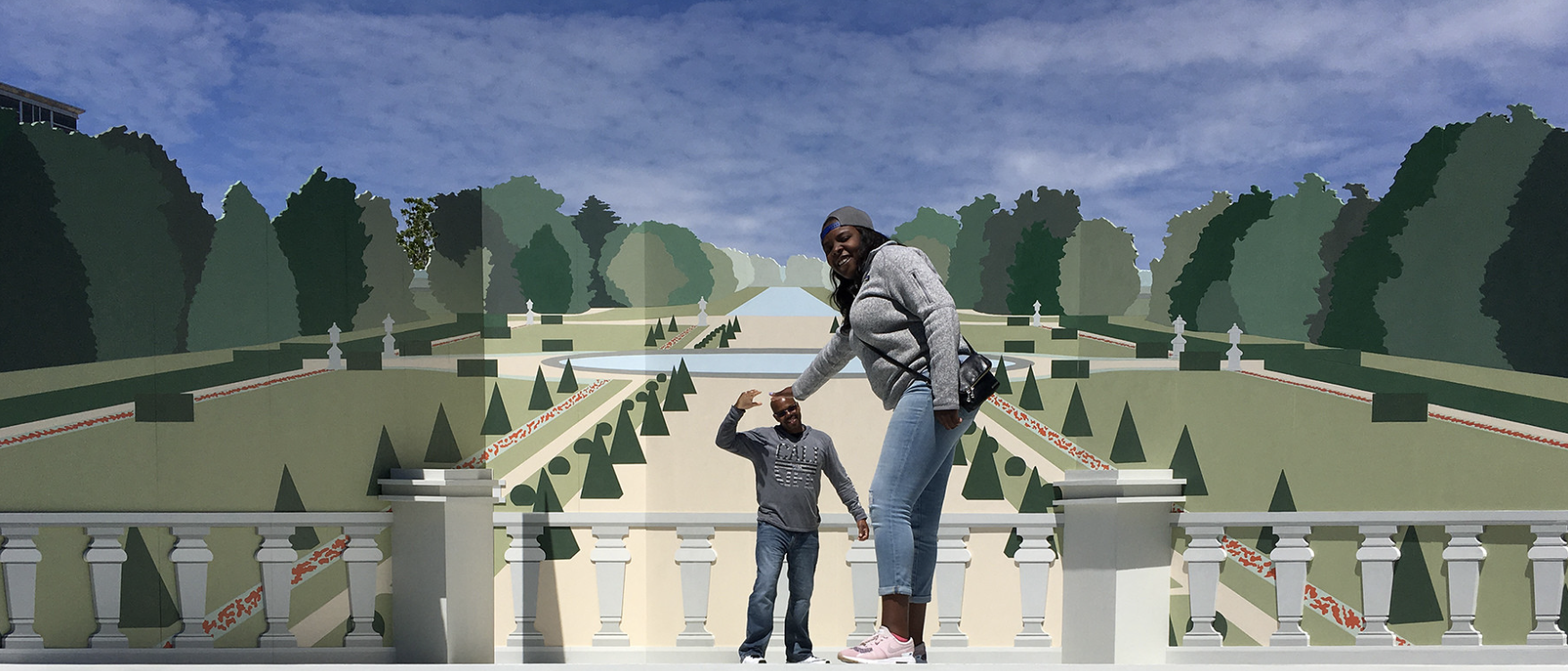
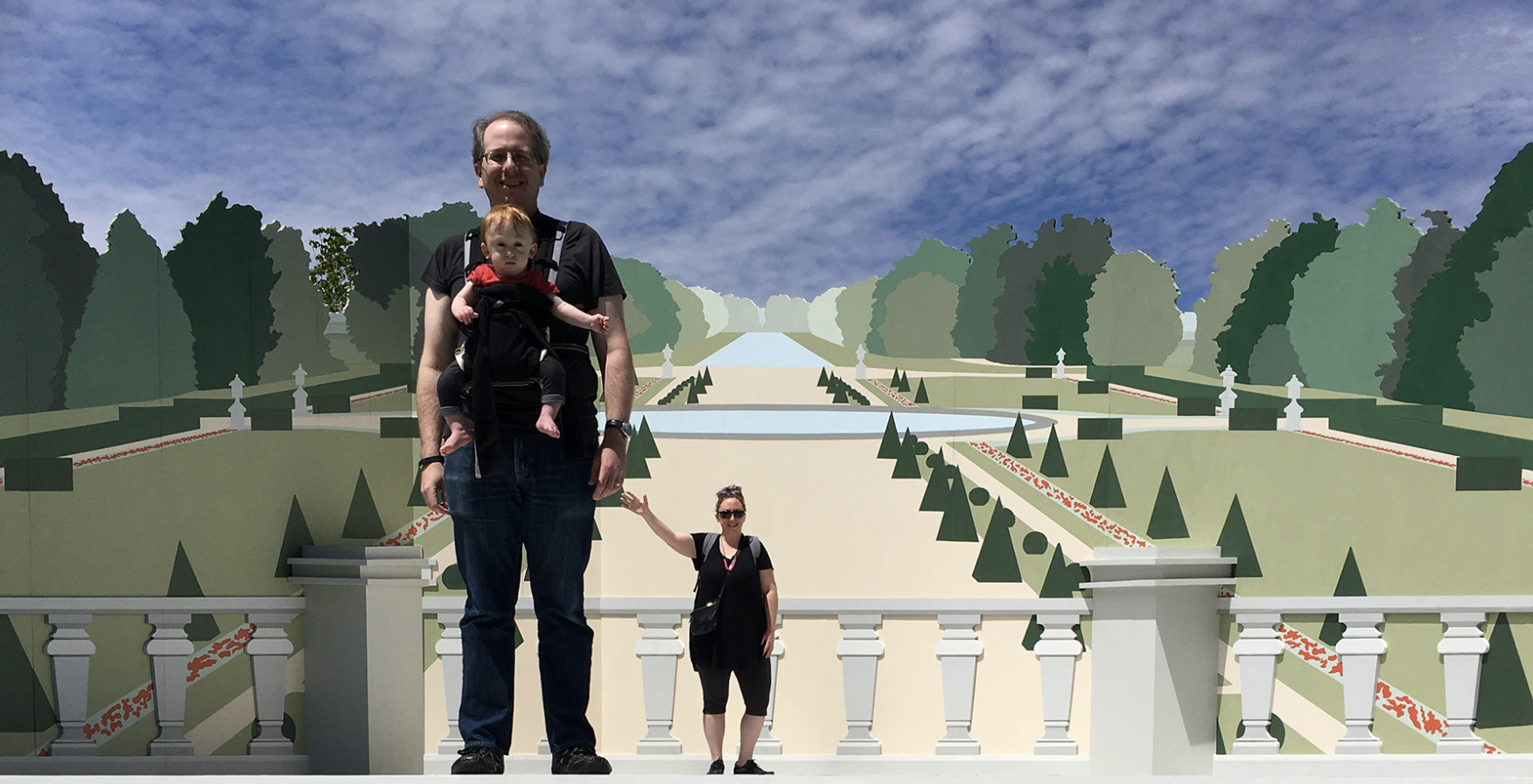
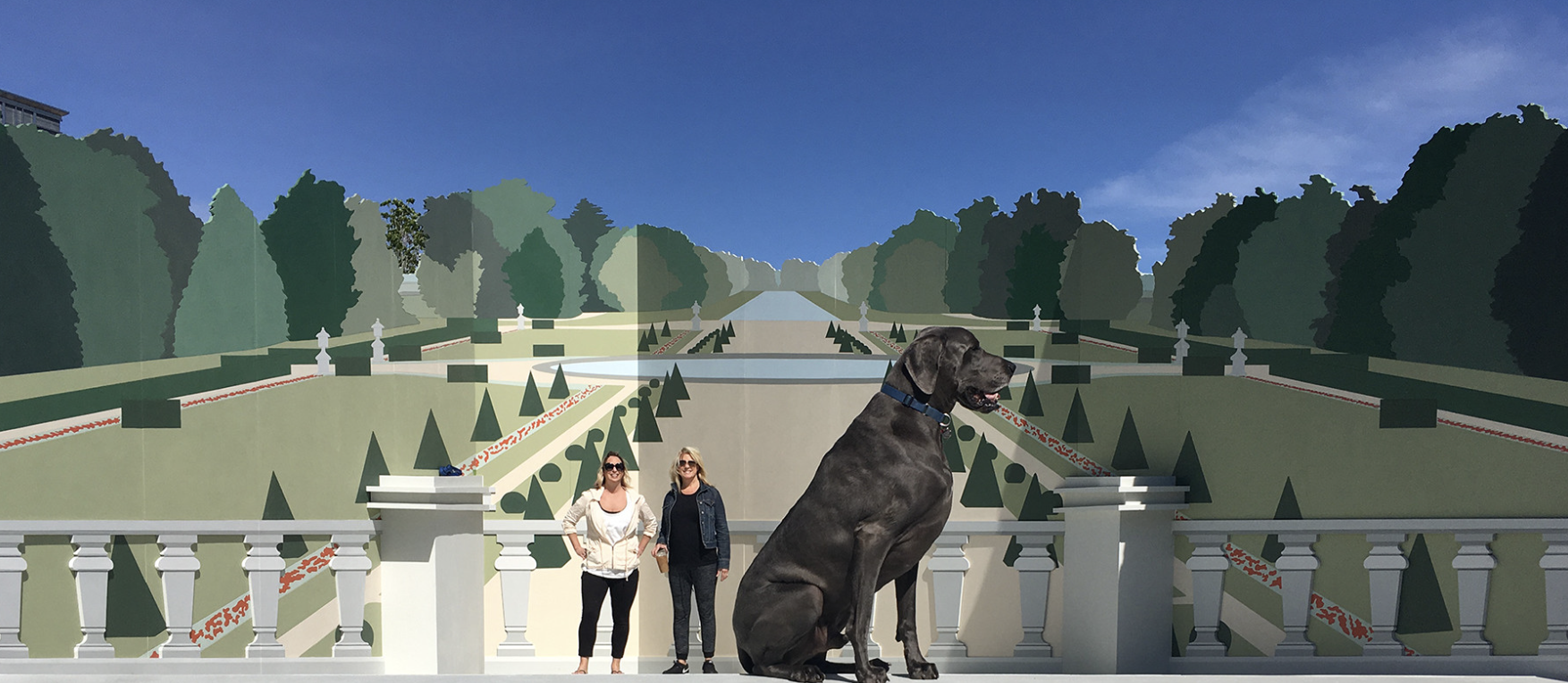
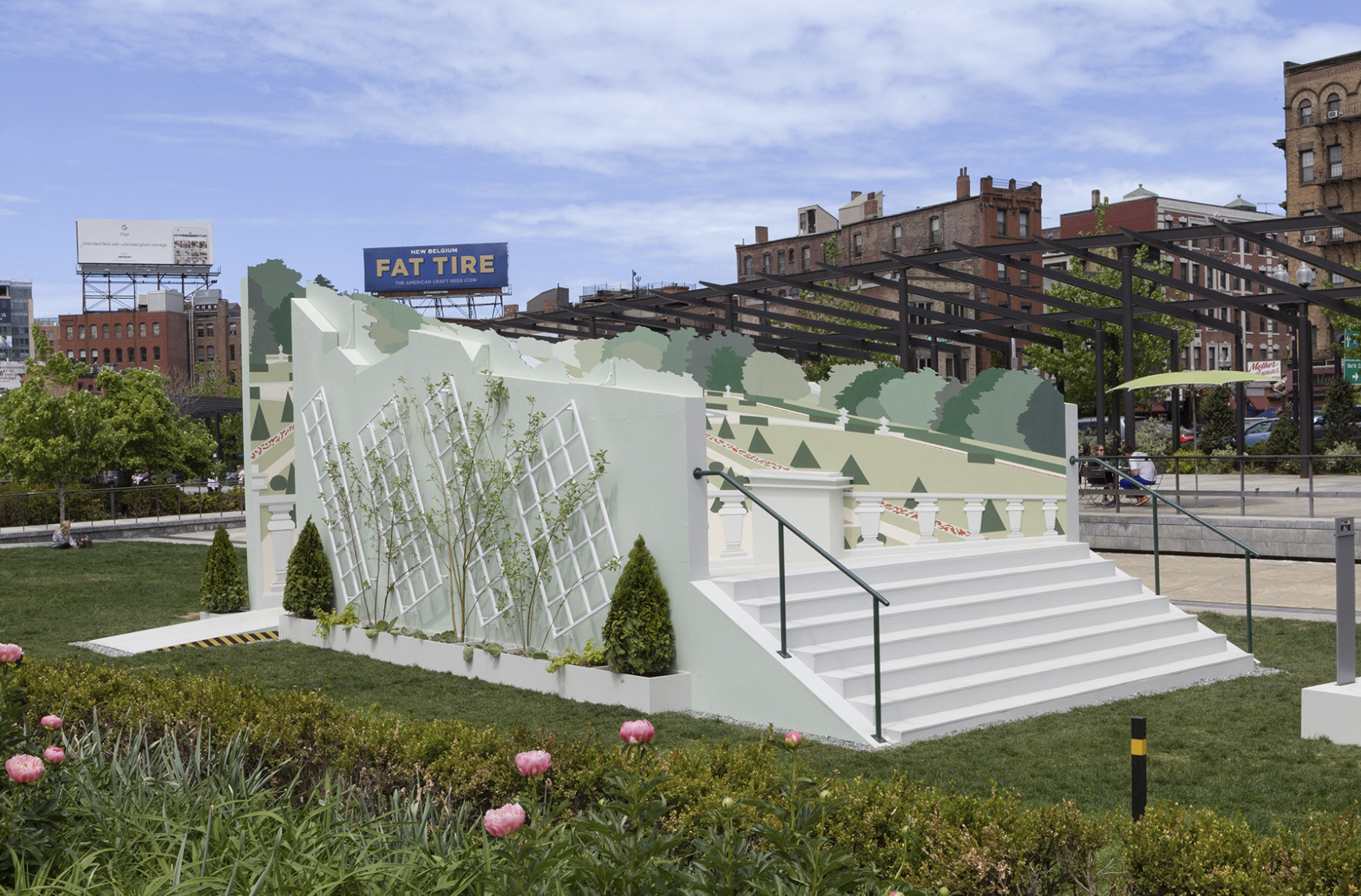
Balancing Act I&II, Aakash Nihalani
Using a variety of mediums from masking tape to metal, Aakash Nihalani creates minimalist geometric forms on two-dimensional planes that simulate three-dimensional interactive experiences. Exploiting the malleability of human senses, Aakash’s site-specific artworks modulate our spatial perceptions to provoke surprising and often humorous moments that interrupt the routine of our everyday life.
Balancing Act is composed of two playful sculptures of tilting and toppling blocks caught in a state of suspended animation. In Balancing Act I, a tower of six cubes appears to fall over as the middle one is pulled out of alignment. This center block serves as an invitation to the viewer to become an active participant; by placing their hands on the sculpture, they become the catalyst for the impending narrative. Balancing Act II depicts haphazard blocks precariously piled up, seemingly just a nudge away from collapse. The sparring undercurrent of structure versus disorder in both works reflects the contrast of The Greenway against the surrounding urban landscape, as well as the delicate relationship between nature and industrialization in our world today.
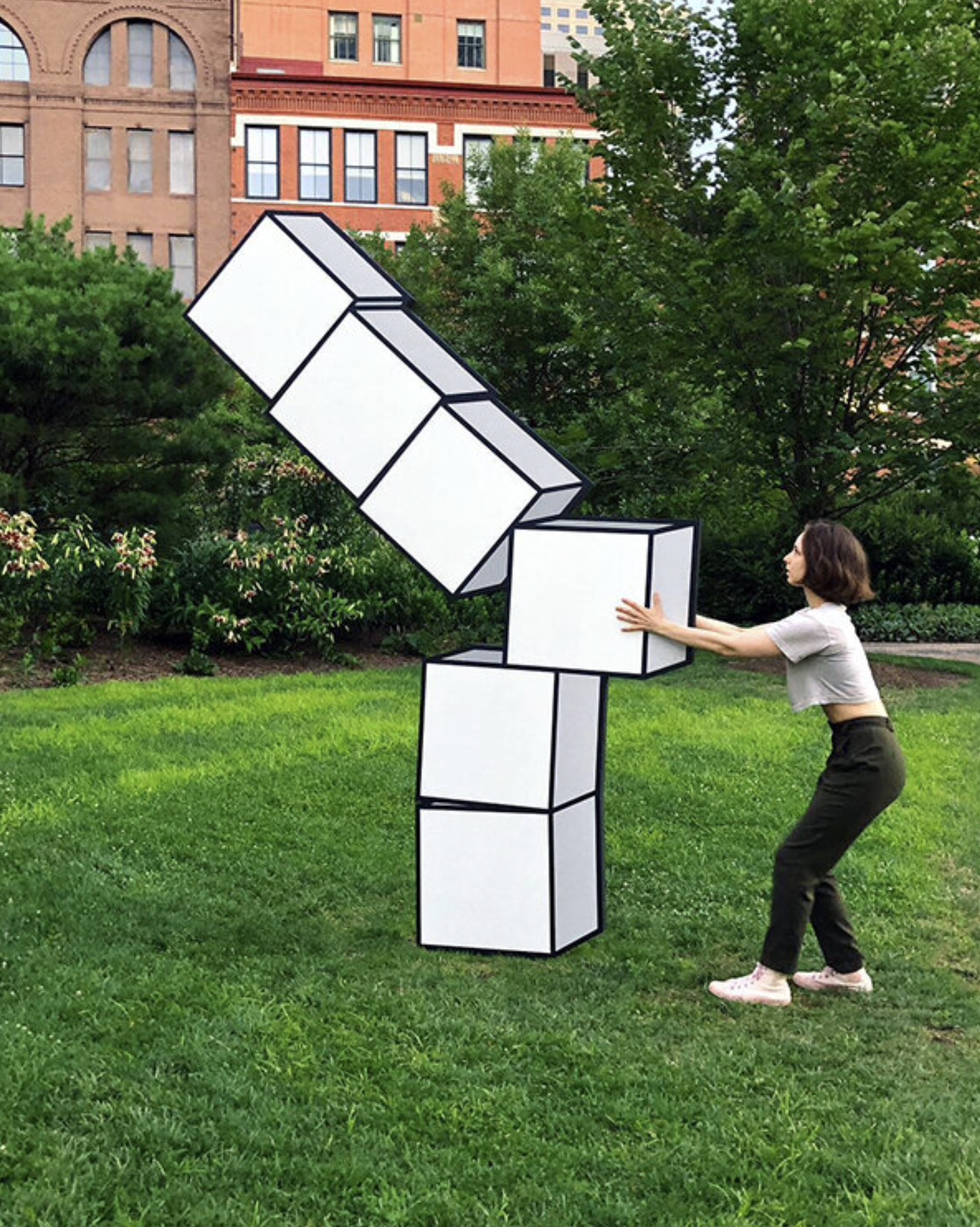
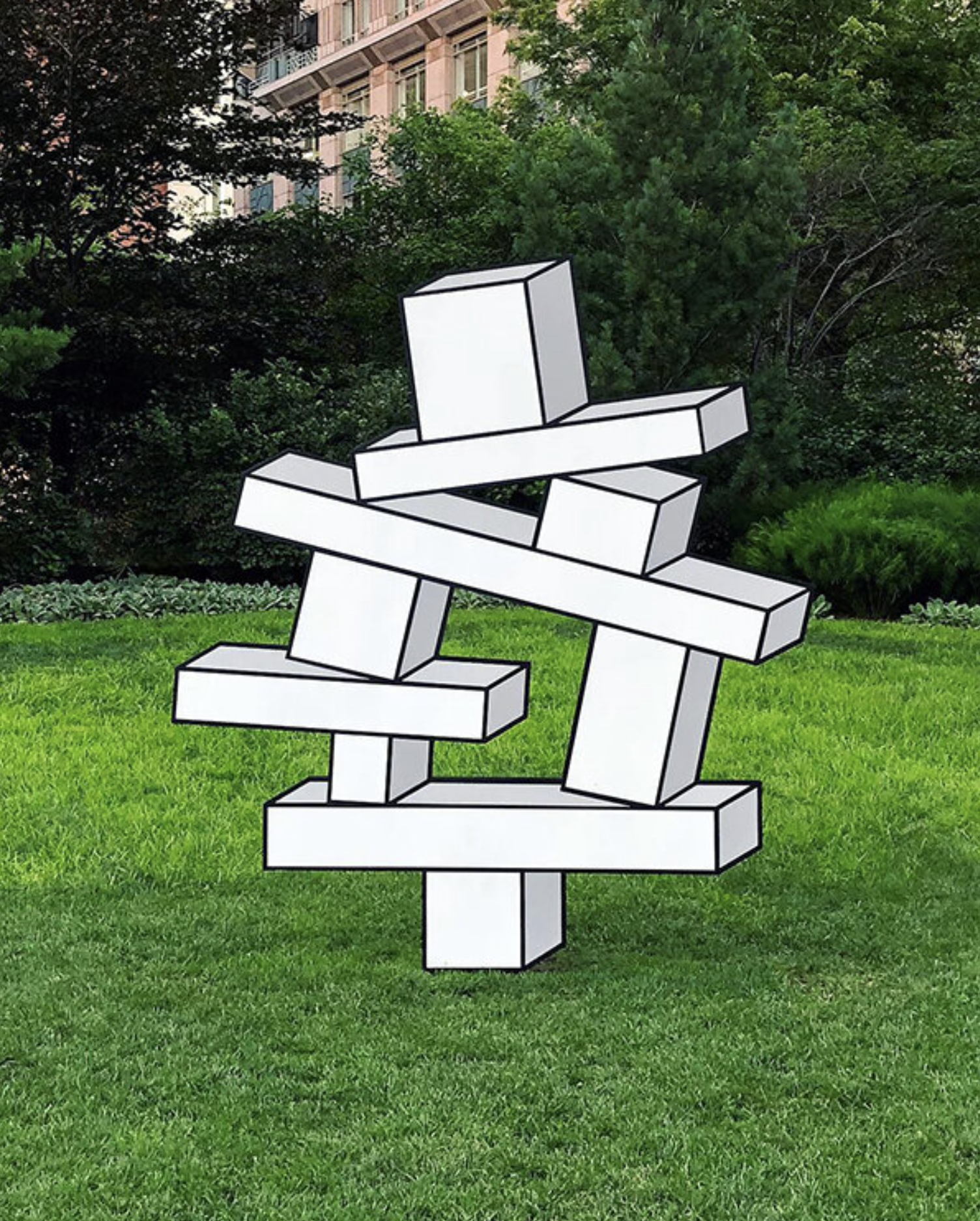

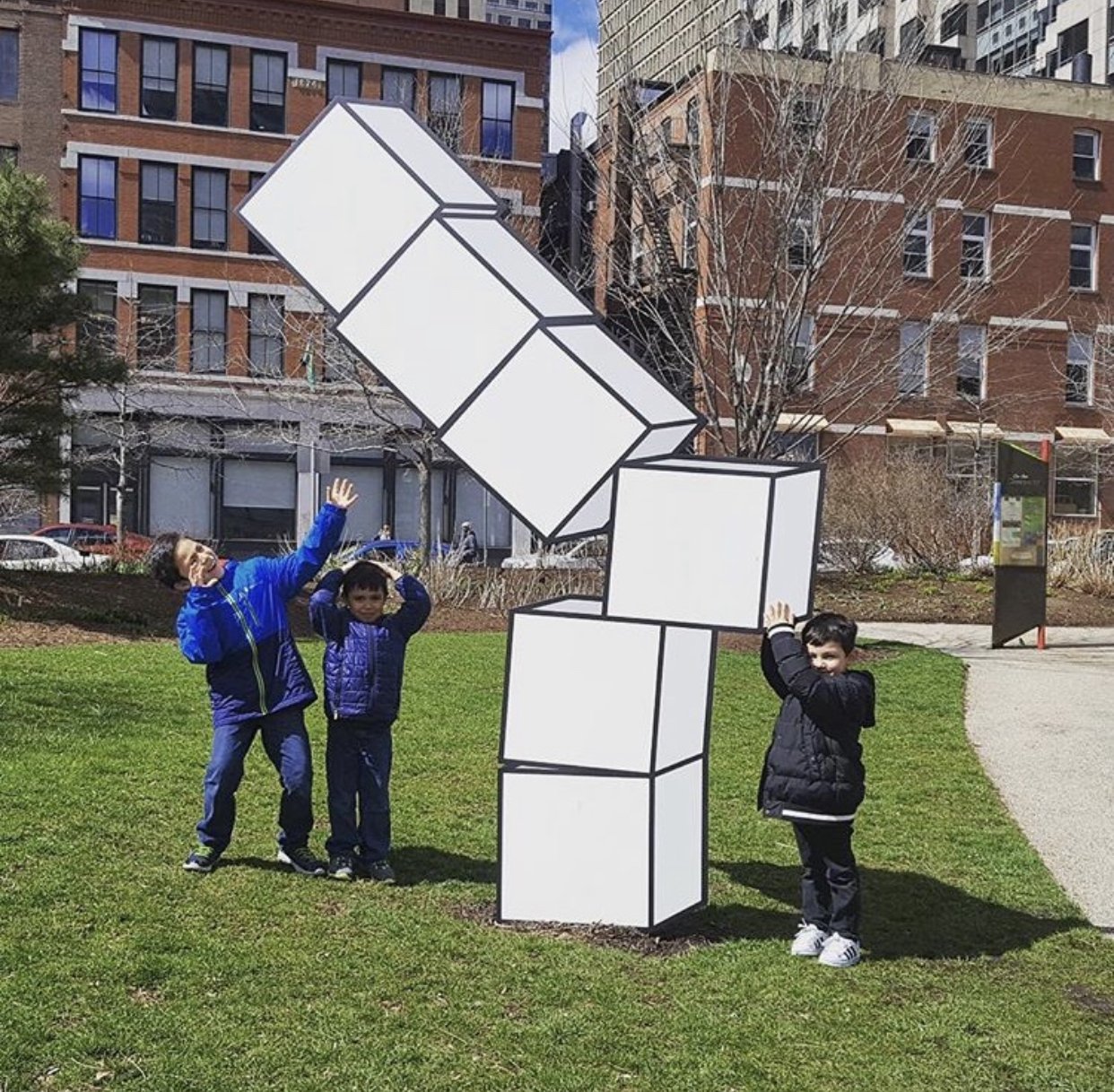
Meeting House, Mark Reigelman
The Meeting House takes inspiration from the simple architecture of the area’s first colonial settlers and was fabricated using traditional materials and techniques. The precariously-positioned New England Quaker-style structure that sinks into the lawn encourages visitors to explore the area’s built environment, consider the layers of history that make up Boston’s unique landscape, and challenge notions of community.
The sculpture references two significant parts of New England history: the small house-like structure is a reminder of the thousands of displaced residents and demolished homes that resulted from the city’s elevated highway infrastructure project, and the larger house is inspired by the Pembroke Friends Meeting House, which is the oldest surviving Quaker meetinghouse in Massachusetts. Traditional meeting houses became the community centers and had the defining characteristics of simplicity, equality, peace, and togetherness. They were places where community members openly discussed local issues, conducted religious worship, and engaged in town business. The Meeting House intends to mimic these ideals, highlighting the potential for civic structures to act as gathering points where passersby can explore, question and interact, and acting as a reminder of the essentialness of social interaction and civic discourse.
Courtesy of the Artist
